The eagle-eyed folks at Chrome Unboxed spotted a new U.S. variant of the Lenovo Flex 5 Chromebook at Costco today. This model is nearly identical to the $409 model that’s been available for a few weeks (see my first impressions of the Lenovo Flex 5 Chromebook here) but is priced at $479.99 at Costco. You only get one hardware difference for that $80 premium: And I think it’s worth it.
What’s the difference?
Instead of 64 GB of eMMC 5.1 storage, per the official specs, the higher priced model bumps that up to 128 GB of M.2 NVMe local storage.

Normally, I say only get the upgraded model if you just need more space.
However, just two days ago I ran an interesting experiment on a gaming PC I built last month.
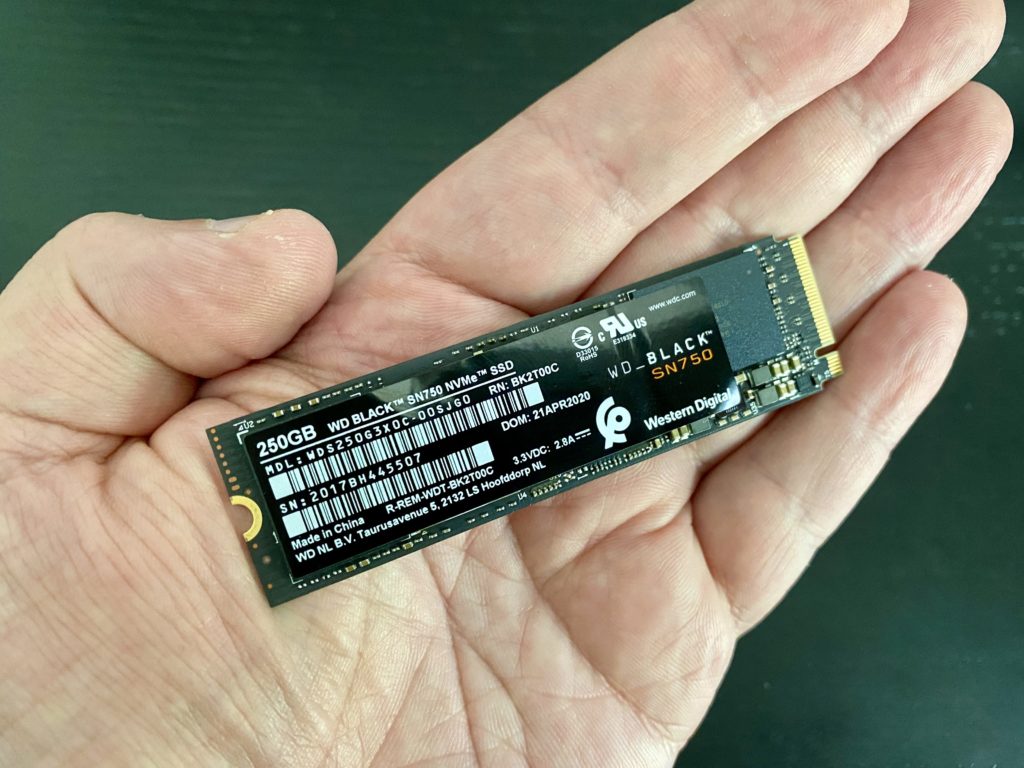
I added an M.2 NVMe drive to the game rig which originally had a SATA-interface SSD drive.
And I did some disk benchmarking.
I mention this because eMMC 5.1 storage, according to the Enterprise Storage Forum, reads and writes data at roughly the same speeds as that SSD drive I was using:
The 5.1 eMMC storage standard delivers transfer speeds up to 400MB/s. That’s roughly equivalent to SATA SSD highest transfer speeds – and clearly fast enough for enterprise applications
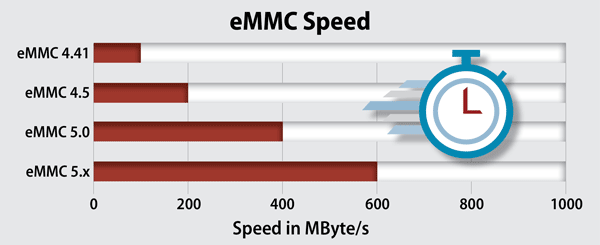
Are they correct?
Well, here are the benchmarks I ran on the old SATA-based SSD drive I was using for the Windows 10 PC. They look in line with eMMC 5.1 speeds:
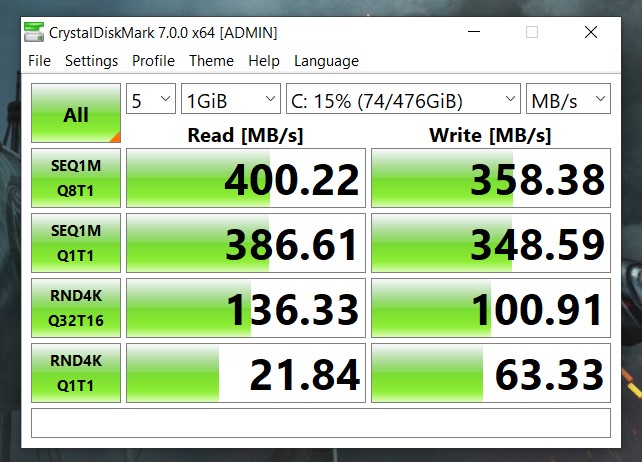
After installing the M.2 NVMe drive, I tested it for speeds.
Here are the results:
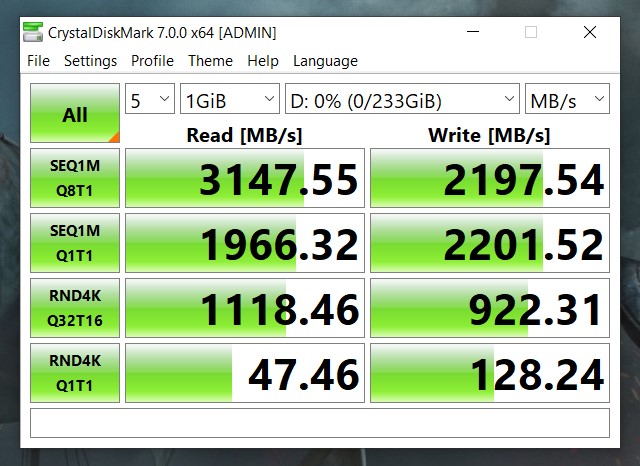
The speed difference is obvious, roughly 60 to 80 percent in disk read and write speeds. I knew M.2 NVMe storage over a PCI 3 interface was fast but I didn’t realize that I could literally read 3.1 GB of data from a drive in one second.
But wait: Most of the data Chromebooks “move” around is probably to and from the cloud. So do the disk transfer speeds really matter?
I used to be in the “probably not” camp, but the continuation of my experiment moved me over to the “maybe so” group.
It turns out that the benchmark speeds were so fast that I ended up swapping the operating system installation from the slower SSD and moving it over the faster drive. And now everything in Windows happens faster.
Boot up to sign-in is about 6 seconds, for example, when it used to be more like 15 to 20. Accessing and opening apps is faster. Hopping deep into the Windows Settings is faster.
Everything. Is. Faster.
Granted, this isn’t a Windows 10 blog: This is about Chromebooks.
The thing is, I’m willing to bet anyone the $68 I spent on my M.2 NVMe drive last week that the $479.99 Lenovo Flex 5 Chromebook is recognizably faster than its $409 counterpart with eMMC storage. That speed is worth a premium as is the extra 64 GB of storage to me.
So if you’re thinking of getting the $409 model and you think it might be worth it too, you might want to check out the upgraded version at Costco. I know I would.


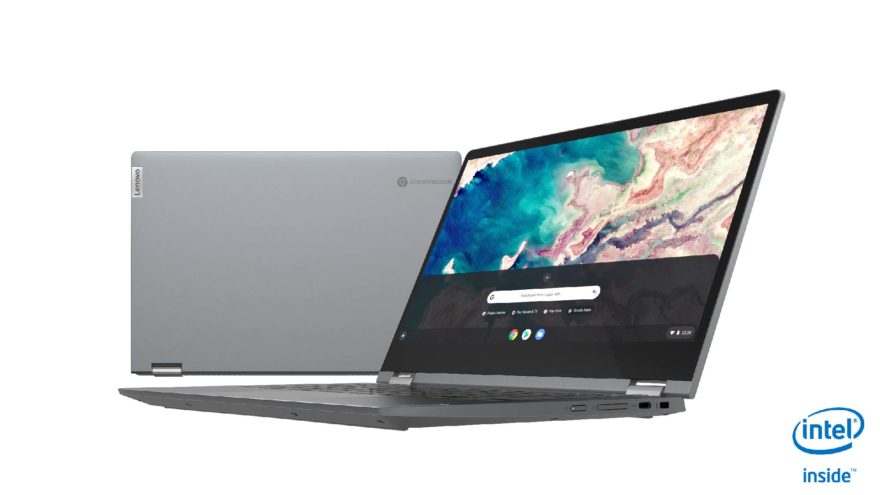
10 Comments
Please help me understand your reasoning. The fact that the Windows OS loaded and worked faster does not seem to help with your question about cloud based operations. Although your speculation that cloud based Chrome activities will work much faster on the newer/alternative drive might well be correct, the fact that switching your Windows OS onto that kind of drive does not seem especially to count in favor of this. Your benchmarks seem to provide just as good if not better evidence. So why make the point about Windows loading time (apparently as a point about cloud based activity)? Sincere question. Peace. Feel free to delete this comment if it is confused or not helpful!
Great question, David, and I appreciate your asking. Essentially, my thought is that regardless of the operating system and its overall footprint, all of them have one thing in common: They have to read and write to disk for different functions. Having said that, opening yet another browser tab isn’t likely to be impacted by the speed of a drive. But opening the files app, for example, opening an Android application or doing just about anything else that’s stored locally is going to faster with an NVMe drive as compared to an eMMC unit. When you’re solely using the cloud on a Chromebook then, no there won’t be that much benefit, if any. When syncing files, images, or other data to the cloud or downloading and storing cloud data, the bigger bottleneck likely becomes your connection speed because the NVMe drive speeds will easily outpace that. I have a 1 GB fiber connection at my home and if I’m downloading something on a Chromebook with eMMC storage, the storage is likely slower at that point. If I have an NVMe drive and download a movie from Netflix, for example, my local drive can store that file as quickly as my bandwidth allows. You also pointed out my Windows loading time comment. Chromebooks generally boot up quick but even they have to read the operating system data into memory upon bootup. That will be much faster from an NVME drive, even though Chrome OS is a lighter operating system. Here, the bottleneck moves from storage to memory speed and most Chromebooks these days are using 2400 MHz (or so) memory speeds. So again, the faster drive will get the entire OS needs into memory quicker for bootup. I hope that helps explain my reasoning. Cheers!
Thanks for your helpful comments! I agree! May I ask if you have any further comment on the Best Buy pre-order people like me currently have for the HP x360 14c for $399 (when it was recently on sale)? For $80 more on that HP, I would choose a 128gb NVMe. With that drive on the Flex 5, it comes with a brighter screen as well. However, I have read more positive reports and reviews of the x360 predecessor that the 14c improves upon. If the Flex 5 had a 15.6 screen instead of 13.3, I would cancel my HP pre-order and buy the Flex 5. Although 13.3 is not too much smaller than the 14 on the HP, I really need a larger and not a smaller screen. Not sure what is pulling me toward the HP. Might you have any comment?
Just my $0.02: since screen size seems to be an important requirement for you (and I get that: You look at the screen 100% of the time you’re using the Chromebook!), I’d probably stick with the HP in your case. The only other suggestion I could think of is getting in front of the smaller screened Flex 5 and see how it feels. If you can live with it, or better yet be happy with it, then I’d get the NVMe Flex 5.
No question, this is a fantastic Chrome book, even in the $409 configuration. I got to use one for a week, before I had to deliver it to a customer. I love the idea of NVMe, but would be curious if the faster drive, and larger utilization of the PCIe bus would have any appreciable impact on battery life?
Linus Tech Tips did a practical real world test on sata ssds vs nvme storage.
Apparently when you compared them side by side, no one could tell the difference between them.
Video editors apparently only use the read and write speeds under 600 as do most programs. So the only noticeable difference is in file transfer.
https://youtu.be/4DKLA7w9eeA
I will add that it may make a bigger difference with emmc storage which is slower… But I don’t think it will matter much with a sata ssd vs nvme
Double the storage, double the warranty (because Costco) or quadruple the warranty (because Costco plus your Costco Visa) and it’s close to a no-brainer regardless of the speed.
I was about to order it today but looks like it’s no longer on the Costco website.
I was going to order it today but looks like they took it off the site!